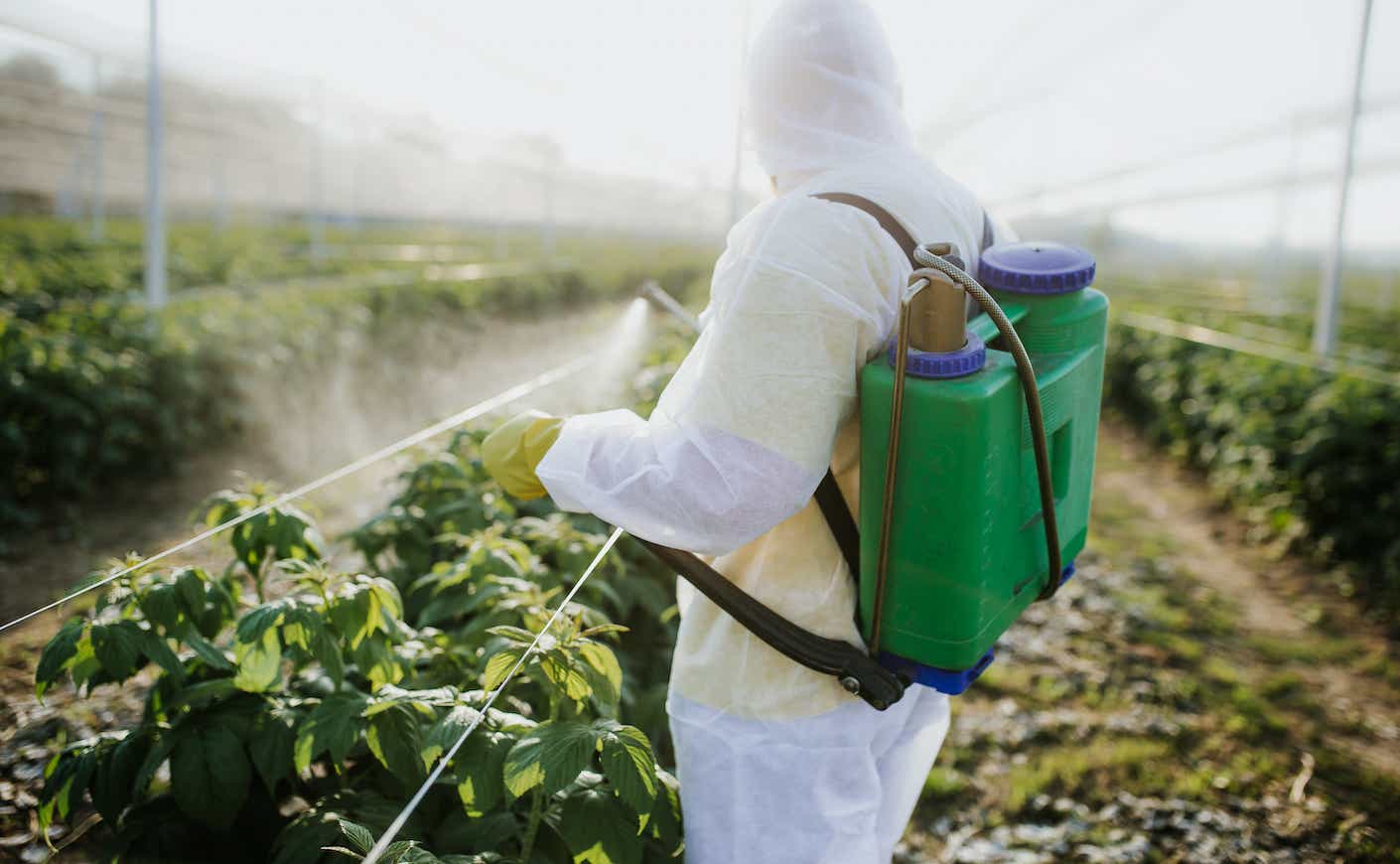Ever since we were kids, we've been told to eat our fruits and veggies — but not all produce is treated equally. Some are doused in dangerous pesticides and land on the "Dirty Dozen" list, an annual report that identifies the many fruits and vegetables loaded with unsavory, not to mention noxious, chemicals.
The Environmental Working Group, a nonprofit environmental health organization, just released its annual Dirty Dozen ranking of the non-organic produce with the most pesticides. And the findings are disturbing.
EWG determined that 75 percent of all "conventional fresh produce" sampled had residues of potentially harmful pesticides. However, approximately 95 percent of the items on the Dirty Dozen list — from berries to leafy greens — contain detectable levels of pesticides. On the other hand, almost 65 percent of EWG’s "Clean 15" fruit and vegetable samples had no detectable pesticide residues.
This ranking was based on the results of 47,510 samples of 46 fruits and vegetables tested by the Department of Agriculture and the Food and Drug Administration. But the report's getting some pushback from farmers and others in the industry who believe it’s misleading. So we took a closer look at the findings and the kind of impact they could have on our health.
Which fruits and vegetables have the most pesticides?
For the third year in a row, strawberries and spinach claimed the top spots on this year’s list at No. 1 and No. 2 respectively. Kale, collards, and mustard greens all tied for third place once again.
There were a few surprises this year, though — for instance, grapes jumped from No. 8 on the list in 2023 all the way up to No. 4. Here's a look at the complete ranking:
- Strawberries
- Spinach
- Kale, collard and mustard greens
- Grapes
- Peaches
- Pears
- Nectarines
- Apples
- Bell and hot peppers
- Cherries
- Blueberries
- Green beans
It’s worth noting why some fruits and vegetables tend to have more pesticides than others: EWG toxicologist Alexis Temkin noted in the report that avocados don’t have as many chemicals as strawberries because they grow on trees and aren’t as close to the ground near pests.
Which fruits and vegetables have the least pesticides?
Alongside its Dirty Dozen, the EWG also ranked the fruits and vegetables with the least detectable pesticide residues, which were dubbed The Clean 15. These include:
- Avocados
- Sweet corn
- Pineapple
- Onions
- Papaya
- Sweet peas (frozen)
- Asparagus
- Honeydew melon
- Kiwi
- Cabbage
- Watermelon
- Mushrooms
- Mangoes
- Sweet potatoes
- Carrots
Why are pesticides on food dangerous?
Pesticides are typically used on crops to protect them against weeds, insects, and other pests. However, they could be potentially toxic to humans, depending on the quantity and how someone is exposed to them. For instance, researchers have linked them to everything from birth defects and lower sperm count to heart disease and even cancer.
Four of the five pesticides found most commonly on the Dirty Dozen are actually fungicides: Fludioxonil, pyraclostrobin, boscalid, and pyrimethanil. For example, fludioxonil was found in 90 percent of peaches, while pyrimethanil was detected in 54 percent of pears.
While these chemicals help keep produce fresh and mold-free, studies suggest they may hurt hormone systems. Fludioxonil, in particular, has been shown to act like estrogen and increase the spread of breast cancer cells by as much as 1.5 percent.
Think you're safe in the organic section? Think again, because even organic fruits and vegetables can still have some pesticides.
Why do some believe the EWG report is misleading?
The Alliance for Food and Farming issued a statement against EWG's Dirty Dozen list, citing research from the Journal of Toxicology suggesting that the levels of pesticides in conventionally grown produce are so low that substituting them with organic produce doesn't decrease the risk. Others have backed this up, too — as University of California, Davis professor Carl Winter told CNN, “the dose makes the poison, not its presence or its absence.”
Plus, about 70 percent of nonorganic produce tested by the USDA and FDA have pesticide levels within the legal limits allowed by the Environmental Protection Agency. Then again, legal levels don’t necessarily mean that it’s safe: Temkin highlighted that regulators continue to allow some potentially dangerous chemicals, such as chlorpyrifos, which has been linked to brain damage in children and fetuses. Plus, even some pesticides that have been long since banned, like acephate, continue to show up in green beans.
Nutritionists also argue that the real risk isn’t pesticide exposure, but rather not eating your fruits and veggies. After all, only 1 in 10 Americans eat enough produce to meet their nutritional needs, according to the Centers for Disease Control.
What are some ways to reduce pesticides in your food?
You can start by rinsing your fruits and vegetables with just water before eating them, which can reduce chemical levels by up to 70 percent. But you can forget fancy soaps or detergents — the Centers For Disease Control and Prevention says just water will do the trick.
Even though a simple rinse has been proven to be effective, pesticides often penetrate deep into fruits and vegetables, so you might want to consider other methods. For example, cooking and peeling produce can also be a simple way to decrease pesticide levels, though it might decrease nutritional value.
You might try growing your own fruits and vegetables at home or shopping at local farmers' markets and asking about their pest control methods. After all, it never hurts to pick up a new hobby or support local businesses.









